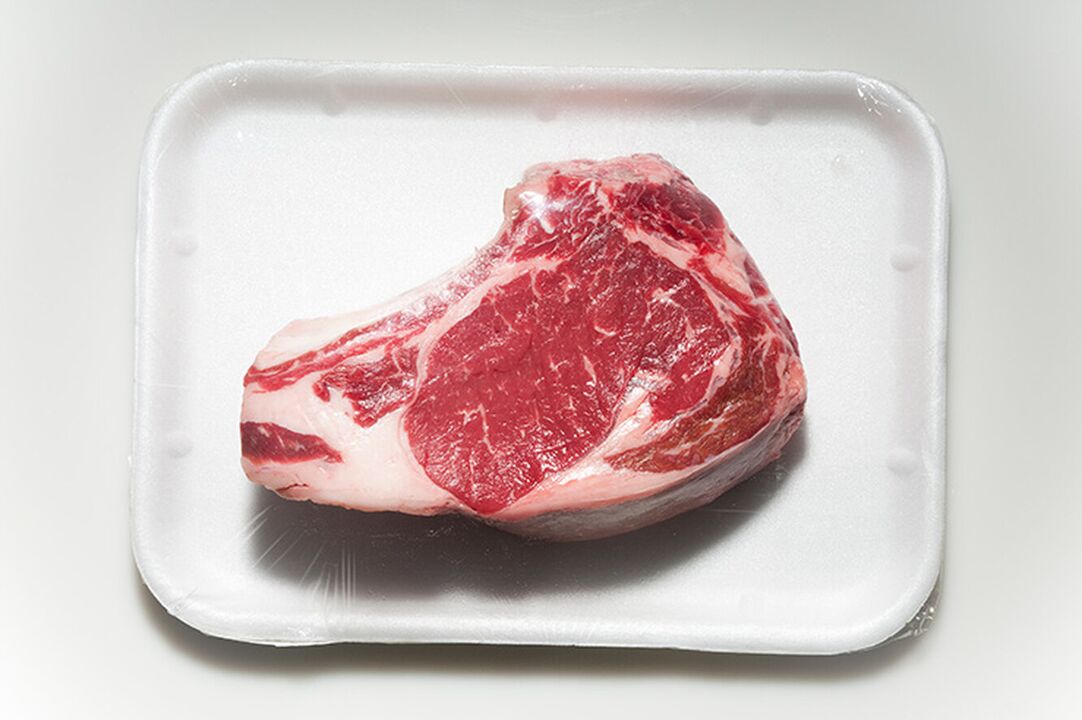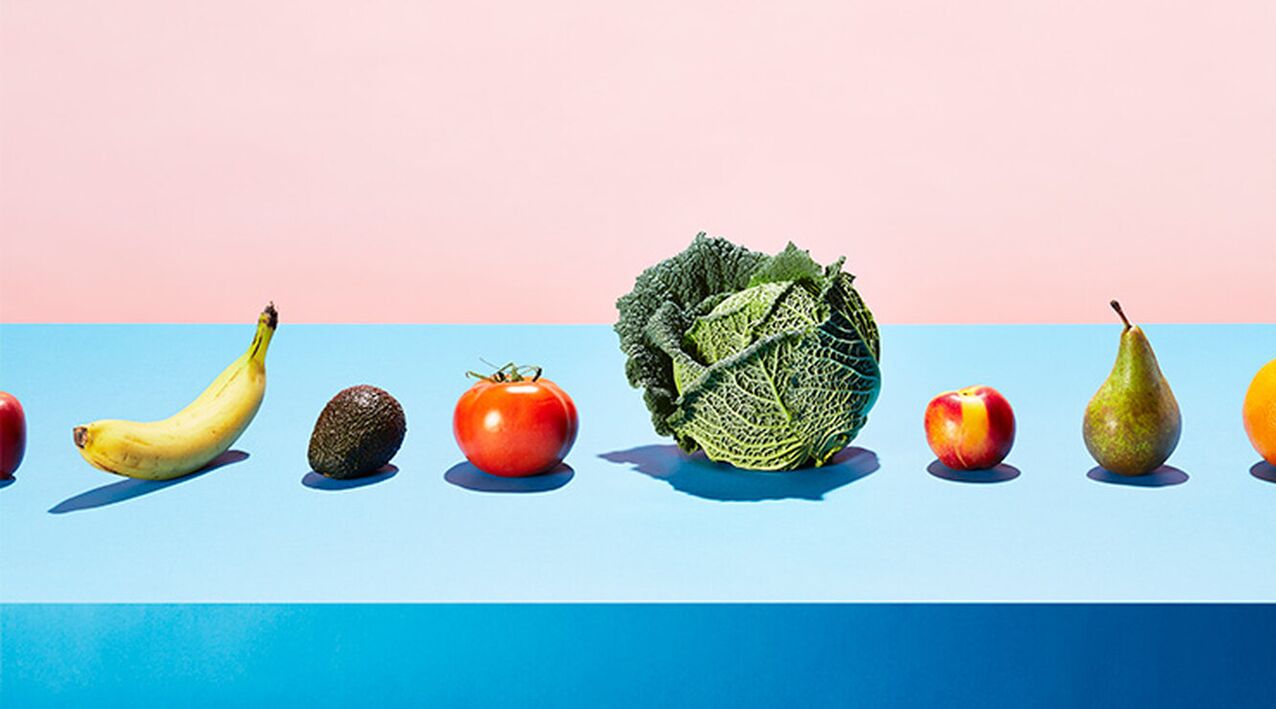Changing eating habits in the case of gout is practically a first-order task, because this disease is associated with a metabolic disorder. What foods can you eat if you have gout, what should you avoid and what should you limit? What should be the diet for gout? Can steak or chicken breast be on the menu? Read and you will find out everything!
Proper gout nutrition is half the success! How can an exacerbation be prevented by following a diet alone? Details in our article.
Gout is a disease caused by metabolic disorders. It occurs when crystals of urate, the salt of uric acid, accumulate in the joints. These crystals begin to form when there is a high level of uric acid in the blood, which in turn occurs when the body produces too much acid or the kidneys cannot remove it. Accumulation of uric acid in the body is gout. Diet helps reduce acid production and restore health.
If you don't treat it and change your diet, it can get worse. Needle-like crystals begin to form in the joints and surrounding tissues. These needles cause pain, inflammation, and swelling—common symptoms of gout. Very often, deposits accumulate in the joints of the feet, especially in the bones of the big toe. A special diet for gout and high uric acid levels can alleviate these unpleasant symptoms.

Gout: symptoms and treatment
Diet is very important for gout, but it's important to make sure you have the disease. We oppose self-medication and insist that you consult a doctor for health problems. But there are certain signs that you may have gout - symptoms. In this case, the diet will be beneficial, but only a doctor can prescribe drugs.
- Joint pain – knees, elbows, wrists and fingers may be affected.
- The big toe joint may be one of the first to be affected.
- The joints not only hurt, but also become hot, and the skin in the affected area turns red.
- Body temperature may rise.
Why is it important to follow a gout diet?
It's simple: the body produces uric acid from purines, the chemical compounds already present in it. However, purines are not only found in the human body, but also in certain foods, such as meat and seafood. In addition, certain types of food trigger the formation of uric acid, which means that the raw materials for urate crystals are alcoholic beverages, especially beer, and fructose beverages - fruit sugar. So the reason gout can be triggered is food. Dieting involves reducing your diet; you have to take certain dishes off the menu.
If you belong to a risk group (for example, you have kidney disease or suffer from high blood pressure) - with an incorrect diet, the chance of "catching" gout increases. If the disease has already been diagnosed and you know for sure that you have gout, the treatment is diet: it is simply necessary to eat right, otherwise the attack cannot be avoided.
Previously, it was believed that men were mainly at risk, and a special diet was developed as a gout diet for men. But lately, more and more women are getting sick, so it is important for both sexes to follow a diet. The gout diet significantly reduces the likelihood of exacerbations in women and men.
However, the aim of the restrictions is not only to reduce the intensity of purine consumption and uric acid production. The gout diet for women also helps you lose weight if you have extra pounds. The fact is that with obesity and even just extra kilos (of course extra in the medical sense of the word, appearance has nothing to do with it), the concentration of uric acid in the body increases, and proper nutrition helps to get rid of both the kilos and this effect.
So, if you have gout, the smart thing to do is diet. Prohibited products must be excluded. Important: do not seriously rush and lose weight with the help of exhausting diets, this will only harm you, the acid level will, on the contrary, increase. It is better to gradually get rid of the excess. Eat right and avoid potentially dangerous foods and you won't be afraid of aggravation.
Gout in women
A diet that excludes fast food and alcohol from the diet will have a positive effect on health in one way or another. However, the diet for gout on the legs means a much larger list of prohibited foods - unfortunately, the diet will be noticeably poorer. On the other hand, changing the diet significantly affects the course of the disease. So if gout is diagnosed, the treatment is diet. A pleasant side effect is possible for women and men – a diet free of processed foods can have an overall positive effect on health. It is also worth noting that gout symptoms are less common in women. The fact is that women have less uric acid in the blood, and estrogen also protects women from gout.
Differences in the course of gout in men and women
Is it safe to say that when gout is diagnosed in women, the symptoms, diet and treatment are different from the male version? Generally not: the only difference is that men are more likely to suffer from gout, according to various estimates 7 times and even 19 times more often. In addition, women rarely get sick before menopause, but men can suffer from this disease even at the age of 40.
It does not matter which joints are affected by the disease. The gout diet in men's legs and arms is no different from that of women, it is important to stick to it. In general, changing your eating habits is the main recommendation of doctors for this disease.
List of foods not allowed in case of gout

First, you need to eliminate foods high in purines from your diet. After all, if your body doesn't get extra purines, it doesn't produce excess acid from them, so why give it material for construction. Many purines are found in foods, such as:
Red meat. Lamb, veal, pork and beef are not the best choice for gout patients. All of this can be eaten, but portions should be limited.Meat by-products. Liver, kidney, brain, any "internal" meat can cause an aggravation. Yes, all this can be very tasty, but if a gout attack is on the other side of the scale - no thanks.Game, game. Of course, it rarely appears on the table (well, unless you or your partner is an avid hunter), but if you are suddenly offered to try something exotic in the form of venison or roast pheasant, then refuse.Fish and seafood: purines just float in them. Cod, herring, trout, mackerel, sardines, tuna, as well as crabs, shrimps, clams and many other seafood can greatly worsen the condition of a person with gout. True, some doctors believe that the benefits of seafood outweigh the harm, but only if they are consumed in small amounts.
What else should you avoid? The following foods have also been shown to increase uric acid levels in the body:
Sweet drinks: lemonade and industrially produced sweet fruit juices.Alcohol: beer and wheat-based spirits such as vodka and whiskey. It is somewhat possible, but if we are talking about a diet during a gout flare-up, it is not at all possible at the moment.Extra sugar: honey, agave syrup, other high fructose foods.Yeast additives. Half-done products (sometimes they contain something completely incomprehensible).
In addition, it will be very good if you can give up white bread, cakes and cookies. They are not very dangerous in themselves, but they do not contain many nutrients, and this also provokes the body to produce uric acid.
Of course, a steak or a liver pate sandwich won't cause an attack, the point is to follow a diet with gout and high uric acid in general.
What to eat if you have gout: allowed foods

Agreed, the list to exclude from the diet is quite impressive, but this does not mean that you should only eat sunlight. Here are some gout-approved foods.
Vegetables. You can eat absolutely anything, including those that contain a lot of purines (such as spinach) - they are not absorbed as well from vegetables.Fruits and berries. Almost everything is possible, and some are even necessary - cherries have been proven to reduce uric acid concentration, so they are especially useful as a nutrient in gout.They are legumes. And again, anything, even lentils, even soybeans, even green beans.Whole grains. Oats, brown rice, barley - just as an example.Nuts. Dairy products. In general, these are more or less safe, but it is better to eat and drink those with reduced fat content.Egg. Lean meat (chicken, turkey).Coffee, tea, green tea. There are studies that suggest coffee slightly reduces the risk of gout flare-ups, but drinking too much can have other health effects, so it's best not to overdo it.Vegetable oils: coconut, olive, flaxseed.Any spice.
Very useful for gout or a tendency to drink as much as possible. Another recommendation is to eat foods rich in vitamin C. Of course, it should not be store-bought orange juice, but orange or lemon tea is also suitable.
Diet for gout: food table
So what can and can't you eat if you have gout? Based on the above, we have compiled a short list of products for you to check.

Can
- Vegetables
- Fruits and berries
- They are legumes
- Whole grains
- Nuts
- Dairy product
- Egg
- Lean meat
- Coffee, tea, green tea
- Vegetable oils
- Any spice
Carefully
- Red meat
- Seafood
- Fish
- White bread, pastries
Rarely or never
- Byproducts
- Game, game
- Fruit juices, lemonade
- Honey and other high fructose foods
- Half-done products
- Alcohol
- Yeast supplements
Of course, eating during a gout flare-up means that foods in the "Caution" column move to the "Rarely or Never" column. If your joints hurt, it is better not to overload it with additional deposits, even the most insignificant ones.
Nutrition for gout: menu
So, everything is clear with the allowed and prohibited products, but how to combine the possible so that it is tasty and not repeated too often? We have prepared a weekly sample menu for you and tried to make it as varied as possible so that you have something to choose from. Of course, you can make any additions to it from the list of approved products (and little by little - carefully).

Monday
- Breakfast: green tea, "lazy oatmeal" with kefir or yogurt with berries. Just pour kefir or yogurt over the berry oatmeal and leave it in the fridge overnight. You'll see, it's delicious!
- Lunch: quinoa salad with boiled egg and fresh vegetables, miso soup.
- Dinner: Whole grain pasta with chicken and vegetables.
Tuesday
- Breakfast: coffee, cottage cheese, peach or several slices of melon, bran flakes.
- Lunch: Brown rice with roast turkey.
- Dinner: omelette with mushrooms and spinach.
Wednesday
- Breakfast: vegetable salad, a handful of walnuts.
- Lunch: lentil soup with chicken soup.
- Dinner: burger (wholemeal bun, turkey slice, cheese, vegetables).
Thursday
- Breakfast: tea, yogurt with berries and bran flakes.
- Lunch: chickpea pilaf with chicken and vegetable salad.
- Dinner: steak from lean fish, garnished with green beans.
Friday
- Breakfast: coffee, scrambled eggs with tomatoes and peppers.
- Lunch: potato casserole with minced beef (in the period of exacerbation, replace it with chicken).
- Dinner: fruit salad.
Saturday
- Breakfast: milk, potato pancakes with low-fat sour cream.
- Lunch: grilled vegetables with chicken kebab.
- Dinner: berry smoothie, a couple of sandwiches with cheese and herbs (it is better to buy whole grain bread).
Sunday
- Breakfast: tea, whole grain milk porridge with berries.
- Lunch: lasagna (again, it is better to use whole grain sheets as a base and minced chicken).
- Dinner: julienne with chicken and mushrooms, homemade mulled wine based on berry preserves (just add your favorite spices, apples and citrus fruits and heat).
You can use any vegetables, fruits and berries as a snack. We remind you that cherries and citrus fruits are especially useful, and it is important to drink more clean water. Dehydration makes gout worse.
In general, the gout diet, Table 6, is quite easy to follow, the list of products is quite extensive and you can find many different combinations. Of course, it is much easier to follow a diet in summer, as vegetables are cheaper and the selection is much larger. However, you can always pay attention to seasonal vegetables: for example, the watermelon season continues in September, in December the shops are full of mandarins, and then they are replaced by pomelo. . . The same cherry can be used in summer and in winter to make compote or pie (the latter is better if it is not made with yeast) dough and rarely), and lemons are available all year round without restrictions.
The right diet for gout: results and reviews
If you follow the proper nutrition of gout, the patient can expect a longer remission and a milder course of the disease. The diet relieves gout and its symptoms - pain decreases, inflammation subsides. There are many reviews about this. It is important to note that almost all people who have shared their gout struggles online have regretted not seeing a doctor at the first symptoms. So, even if you haven't been diagnosed with gout, but something in this material seemed familiar, go to the clinic - just to be safe.
Usually a 6-factor diet, gout, prescriptions with many restrictions, none of this is a death sentence. The frequency of exacerbations can be significantly reduced if you eat correctly and thus control your uric acid levels. And even if you eat a steak once a month and wash it down with dark beer, it's unlikely to trigger an attack if you generally follow your diet.






























